Best Time to Visit Ireland: When to Travel to Ireland

When is the best time to visit Ireland, you ask? Ireland has a mild climate with four distinct seasons. Though many people associate Ireland (and many of the surrounding regions, including the UK) with excessive rain and grey skies, intense and torrential rain is pretty uncommon. However, regular rainfall is to be expected.
Ireland has a temperate climate, the coldest month during winter (January) will generally not drop below 5°C, and summer only gets up to around 18°C for a daytime high. No matter which season you visit Ireland in, be sure to pack a sweater, as you might be surprised that you need it even during summer.
Most of Europe’s busiest tourist season is from April to September. Going in the offseason is a safe bet for reduced crowds, better airfare and accommodation promotions, and bargain deals on entrance tickets and sights.
While you sacrifice the warmer weather – a massive draw for many who favor summer travel – you get to experience Ireland at a much more relaxed pace and feel that much more like a local. There are a million ways to answer the questions, when is the best time to visit Ireland? So I’ll break down the Ireland weather by month.
When is the Best Time to Visit Ireland?
Weather in Ireland in January

January is typically reported as the coldest month in Ireland, but if you’re averse to snow, you probably don’t need to worry – unless you are venturing into the far north. Average temperatures will never drop below freezing; instead, hovering between about 3 and 8°C.
It’s almost an Irish fact that you can expect lots of rain (as much as 80% of the days in the month), and pack accordingly; boots that cover your ankles, a packable rain jacket, warm socks, and many layers so that you can have greater control over your body temperature for sudden drops or rises within a day.
While it might sound a little too chilly for some, the cold weather does have plenty of bonuses! When it’s nippy out, the conditions are perfect for a steaming, warming, and comforting helping of Irish stew. If you’re an outdoor lover and/or a fairytale fanatic, maybe a trip to the snow-peaked Mourne Mountains is in order, which partly inspired CS Lewis’ The Chronicles of Narnia.
Note that if New Years’ Day – January 1st – falls on a weekend, the bank holiday will be moved to the following Monday, so be sure to plan accordingly if you intend to hit up specific sights on that day.
Weather in Ireland in February

February is no less cold, but some of the wetness has been known to decline this month; rainfall days decrease to about 70% of the days in the month. Ironically, February 1st is the traditional marker for spring in the country, despite a lack of buds and birds. Sunshine hours are a little bit higher, though not by much, and cloud cover is still predominant most days, preventing much warmth from getting into the lower atmosphere. Translation: don’t box up your mittens and scarves just yet.
This is pretty good movie weather (something you’d probably be doing at home anyway), so if you’re in or around Dublin during this month, don’t miss the Dublin International Film Festival. Though the name suggests a medley of films, this festival primarily focuses on national films and encourages moviegoers to immerse themselves in the best films Ireland offers.
Weather in Ireland in March

The temperature will begin to climb a little bit this month; hallelujah! You may still want a few warming items, but the days of 3°C are falling behind you, and the new low should be set around 7-8°C. Rainfall will remain the same, if not a little heavier than the previous month. As always, with Ireland’s cold months, the best clothing options are layers and opt for outerwear (jacket & boots) that will withstand wet environments.
Regardless of whether you celebrate back home, it will be darn near impossible to come to Ireland in March and not cross paths with the country’s largest and most spectacular holiday – St Patrick’s Day on March 17th.
Regardless of what the weather has in store, you can bet that droves of people will be occupying bars, pubs, and nightclubs left, right, and center, and you’re in for an absolutely unforgettable experience (especially in the country that invented Guinness).
Don’t let a bit of wet or cold weather stop you from partaking in the festivities because the famous Irish Festival – St Paddy’s Day in Ireland is something many people wish they could experience.
Weather in Ireland in April

It’s finally safe to venture out in lighter layers; April is the month spring will first start to show itself (albeit shyly). Thanks to months of rainfall, the countryside will be a lush green, and average temperatures will fall between 8 and 12°C.
You can probably forego your boots some days and lace up your sneakers instead. There will be much more sunshine than in previous months too, so layering here is critical because you never know when you’ll want to cast off your jacket without catching a chill.
Dublin has a yearly festival in April that further cements its history as a place of literary enlightenment: the One City One Book festival encourages readers to devour at least one novel that relates to Dublin itself during this month. You’re likely to learn a lot about past and present national authors and even some of Ireland’s fascinating history.
Weather in Ireland in May
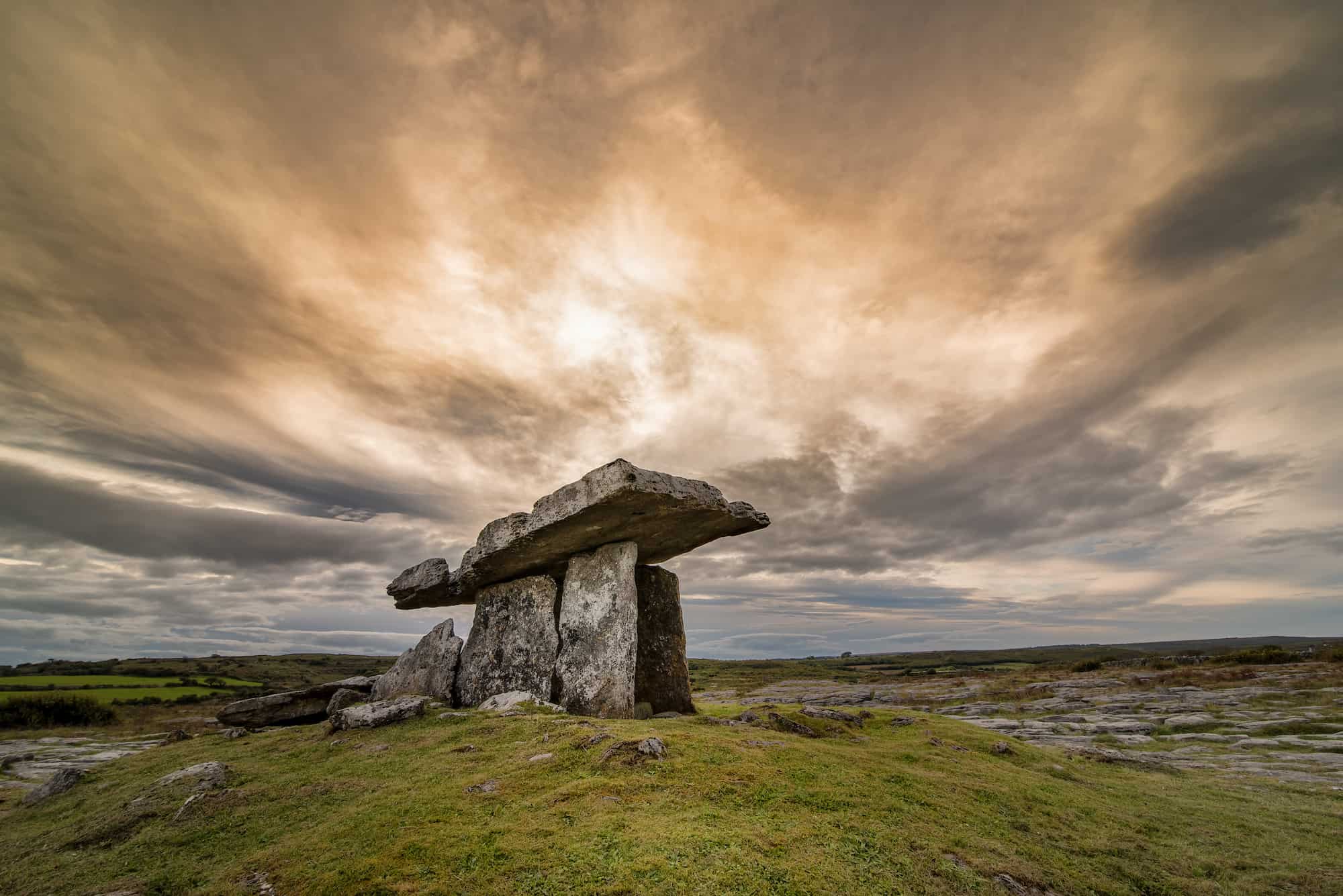
Spring will reach its peak during this month, and surprisingly this is a best time to visit Ireland. There will still be rain, but typically less than 20 days of the month. Cloudy and overcast skies will often remain, but there will still be the highest amount of sunshine hours so far in the year. Note that the evenings still hit much lower temperatures, so if you are out and about at night, you’ll want to keep your coat handy.
Though it’s a bit farther out from Dublin, the town of Ennis in County Clare hosts its annual Fleadh Nua musical festival. It’s incredibly involved, an eight-day festival that promises everything from street entertainment to Irish music and dance workshops. Judging from the fact that the festival in 1974 was only three days long and is now over a week in length, this is something worth seeing even if it means a bit of a commute.
Weather in Ireland in June

Though constant cloud cover may not be what you had in mind for June, at least it’s not freezing. Average temperatures will rise to between 10 and 17°C —definitely getting warmer—and sunshine hours are on par with May. So, chilly at times, but pleasant!
Ennis in County Clare has a lively and much-loved street festival every year in June. Expect local artists, locally prepared foods, and live entertainment, among many other things. Plus, it’s finally getting warm enough for patio weather, so pubs offering beer gardens will be opening their outdoor areas for a side of the skyline with your pint.
Weather in Ireland in July
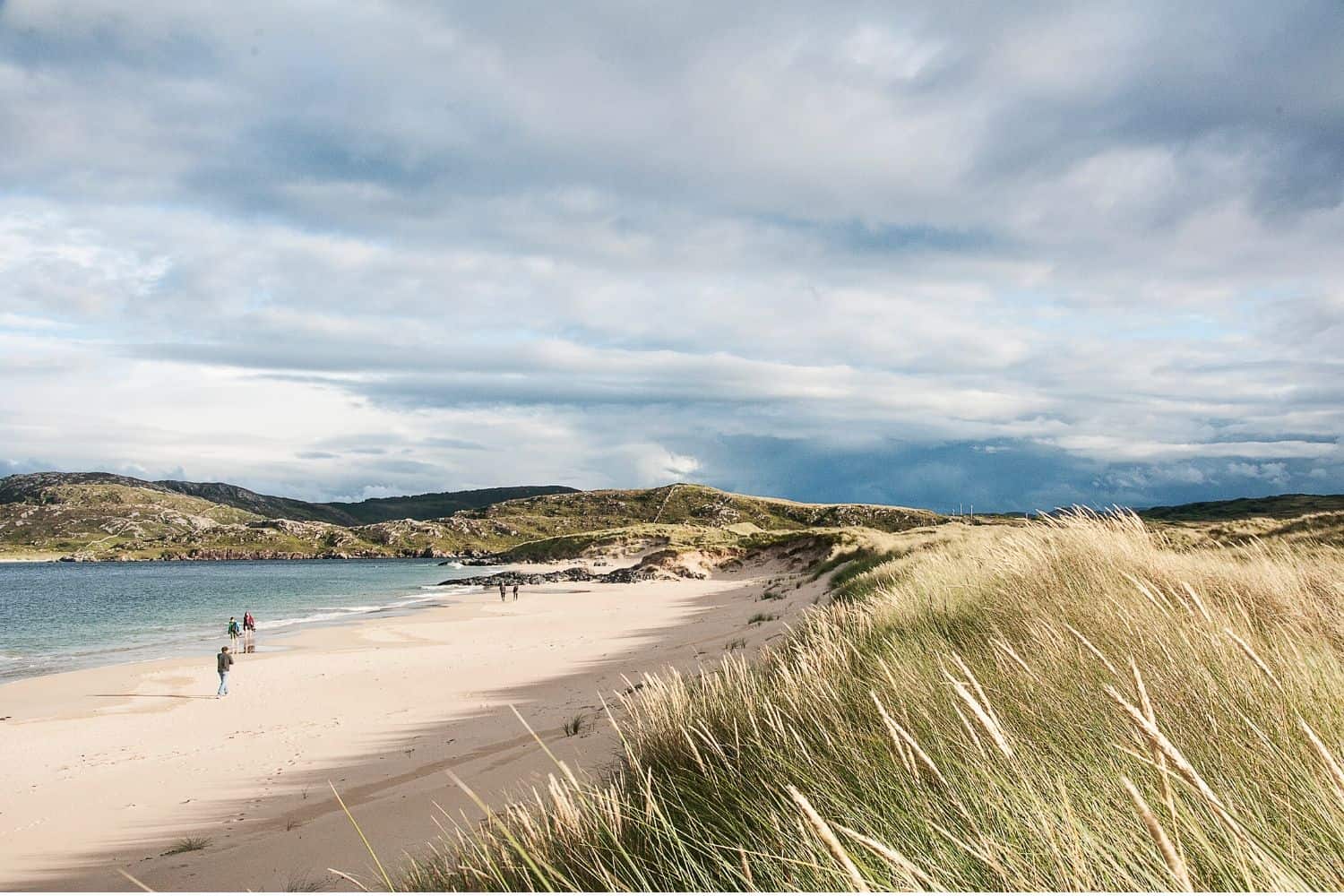
This is officially the start of the top travel time for Ireland as a whole (particularly Dublin, the capital city), thanks to much warmer weather. Needless to say, it’s the best time to travel to Ireland. Get ready for days averaging 16° and rising as high as 19.
Because of this nicer weather, this is also the start of the summer travel rush, when traveler numbers will be at their highest. If you prefer to avoid the crowds that come with summer travel, this maybe isn’t the month for you, or you should go hiking in Ireland to avoid crowds.
That said, Galway hosts an annual festival—the Galway Arts Festival—that is extremely popular and recommended for anyone traveling in the area. All in all, this is the best time to go to Ireland.
Weather in Ireland in August

August is the last summer month in Ireland and one of the best times to visit Ireland. Temperature averages will be much the same as in July (including the levels of travelers coming here—brace yourself for higher wait times & crowds), with near-constant full or partial cloud cover. The days will also start to become shorter as fall approaches, with almost two hours less of daylight by the end of the month compared to August 1st.
This month’s notable events happening around the country include the Dublin Horse Show, the Rose of Tralee Beauty Pageant, and the Puck Fair, one of the country’s oldest fairs. It happens annually in County Kerry and centers around celebrating a puck goat – a giggle-worthy concept; long story short, a goat warned villagers of impending Cromwell raids – but you’ll have fun! All in all, some would say it’s the best month to visit Ireland.
Weather in Ireland in September

Though it’s only September, autumn arrives in a hurry, and in my opinion, this is the best time to visit Ireland. The weather in Ireland in September will see the average temperature drop a few degrees and settle around 14°C, so still at a comfortable temperature.
Rainfall will actually be a bit lower than the summer, as the early days of fall tend to be crisp and dry. Similar to the conditions in August, you’ll find that the daylight by the end of September is about two hours less than it was at the beginning, as the days grow shorter and sundown happens earlier.
Things not to miss – Dublin’s yearly Fringe Festival, along with a multitude of harvest-themed gatherings like the National Ploughing Championships and the Autumn Equinox (Mabon) will take place, with sun alignments occurring over Loughcrew (a megalithic structure). There’s also the world-famous Galway Oyster Festival, which is a fantastic time. See our whole blog post on it here!
Weather in Ireland in October

October is another fabulous month to visit Ireland, and you’ll be able to see all the Beautiful Irish sites. With the arrival of October, Ireland officially hits peak fall weather. If this is your favorite season, you’ll probably fall in love with your time here. The average daily temperature will sink to between 8 and 11°C, there will be a slight increase in rainfall, and a definitive increase in cloud cover, with lessened sunshine hours. Still, it’s cool and comfortable with fewer tourists!
There are plenty of events happening around Ireland this month, the most prominent being Samhain (pronounced Sa-wain). Think of Samhain as the Pagan ancestor of Halloween – a celebration marking the end of the harvest season.
Today, celebrations happen that pay homage to the original holiday as Iron Age Celtic Pagans celebrated it. Halloween is still celebrated in a reduced capacity (in Europe, Halloween has a much less noticeable presence than it does in North America), but you’re much less likely to see droves of party-goers in funny costumes.
Weather in Ireland in November
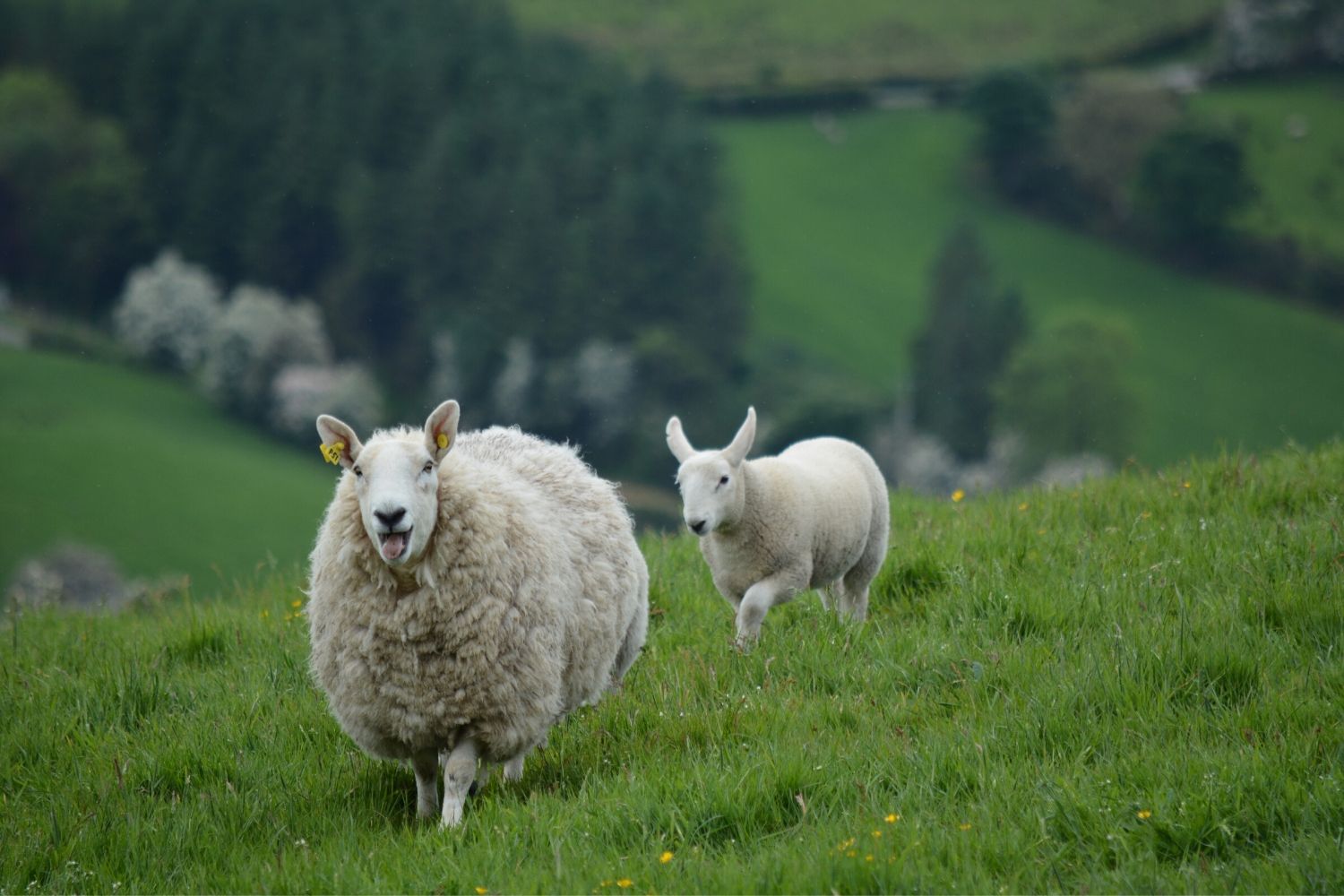
November will be the last of the autumn months as colder weather rushes in to welcome the first whispers of winter. Temperatures will drop to between 5 and 10°C, generally hovering around 8°C, and chances of rain decrease over the course of the month.
You’ll want to break out some warmer gear starting this month in case of sudden temperature drops. There are still events happening, such as the famed Guy Fawkes Day or Thanksgiving, depending on the specific town (depending on the community, this holiday is celebrated in either October or November).
If you’re looking for an unforgettable experience and are prepared to venture a little off-track to get there, the Northern Lights are visible between November and February (go to Donegal or Northern Ireland for the optimal location).
Weather in Ireland in December

Cold weather has finally arrived in Ireland, and although it’s not the best time to visit Ireland, it’s not terrible! December ushers in an average temperature of 7°C, with a low of 4°C and a high of 9°C. Sunshine hours are significantly down this month, so what’s in store is heightened cloud cover and higher rainfall.
Beware the crowds on December 8th; this is a traditional shopping day where many will head into town for holiday shopping. Avoid these areas on December 26th, too – the post-holiday sales begin, and the shops will be chaotic. The Winter Solstice is also world-famous at the Neolithic site of Newgrange for the solar alignment that will occur (this is one of those once-in-a-lifetime events, so if you’re here, don’t miss it).
Festivals in Ireland
St Patrick’s Day Festival (March)

St Patrick’s Day, on March 17th every year, is Ireland’s biggest and most extravagant celebration. Every city will, of course, have its own festival, parade, or other fun show, but the largest of them is undoubtedly the annual St Patrick’s Day Festival in Dublin City. Spanning a full five days in mid-March, this celebration is definitely geared towards those with an inner party animal. Think Mardi Gras, but for nearly a week and with a lot more beer.
The events offered across the five days cover a lot of ground: you can tour the 300-year-old Marsh’s Library, take a city walk to retrace the steps of St. Patrick himself, fill your stomach at a craft beer & food festival, listen to live music left right and center, and the cherry on top: a huge parade that works for hand in glove with theatre and pageantry companies to put on a show, unlike anything you’ve ever seen.
The Burren Slow Food Festival (May)
For anyone who hasn’t yet come across the term, ‘slow food’ is, in short, a movement: it is a celebration of food that is made and eaten slowly, intentionally, and mindfully. There is also a heavy emphasis on a production process with a small footprint; if it is actively fighting against harming the environment, chances are it qualifies as slow food.
The Burren Slow Food Festival is one such celebration dedicated to knowing and understanding where your food comes from and the economic, political, and agricultural aspects of the entire culture of the food processing industry. This May festival offers food and cooking demonstrations, meet and greets with local food producers who keep their farming local, and sampling of some of the freshest, Ireland-produced food around. You might never have thought of food as ‘endangered,’ but that’s just the kind of eye-opening information you’ll learn about if you attend!
Galway International Arts Festival (July)
The GIAF (Galway International Arts Festival) happens in July each year. Now in its 40th year, the festival sees installations and contributions by musicians, dance companies, theater productions, and more. The festival has grown to such a size that it overtakes several venues within the city, many with extra accessibility and sustainability initiatives.
Think anything and everything, including street dancing performances, giant puppeteering, and on-the-spot live music jam sessions. Whether your particular arts interests lie in the theater, music, dance, visual arts, or comedy, there are sure to be dozens of shows you’ll be ecstatic to see. The annual recorded talks are also on display, where people ranging from red carpet stars and playwrights to CEOs are interviewed to talk about their perception of issues faced by our world today.
Cork Folk Festival (October)
If there’s one thing Ireland knows how to do, it’s music. This year, Cork is hosting the annual folk festival for the 40th year in a row, and it promises to be a seriously good time. This isn’t your average folk festival where indie singers and bands come from all over the world; instead, this is a homage to Irish folk music.
The venues involved are bars and pubs, among the city’s oldest or most popular venues, including An Spailpin Fanach (founded in 1779) and Oliver Plunkett Bar. So not only will you get to hear some of the best regional folk music the country has to offer, but the ambiance and setting will complement the tunes just as nicely. (Plus, we know from personal experience that a Guinness goes perfectly with Irish folk music, especially when it’s live.)
The best time of year to visit Ireland

High season (July-September):
Like most European places, Ireland’s high season runs from July to mid-September. This is when you will find the best weather, as noted above, but also crowds. Days are longer, the weather is warmer, and hotel and car rental prices are at their highest. It’s definitely the best time to visit Ireland for ideal weather.
Shoulder Season (May-June and September-November):
We’ve traveled to Ireland twice during the shoulder season and loved it. The weather is cool, there are no lines or crowds at most sites, and the vibe in the air is wonderful. This is also when we’ve found great deals on car rentals and guesthouses. We saw sunny days but also had many rainy Ireland overcast days.
Low Season (Late November-April):
Not the best time to go to Ireland, but you’ll still have a good time if you’re prepared. The temperatures are cooler during the low season in Ireland, and you stand a very strong chance of getting caught in a rainstorm. If you plan to travel to Ireland during this time, you need a packable rain jacket, travel umbrella, and waterproof boots. The upside is you’ll find low prices and low numbers of tourists.
When is the Best Time to Travel to Ireland for Good Weather?
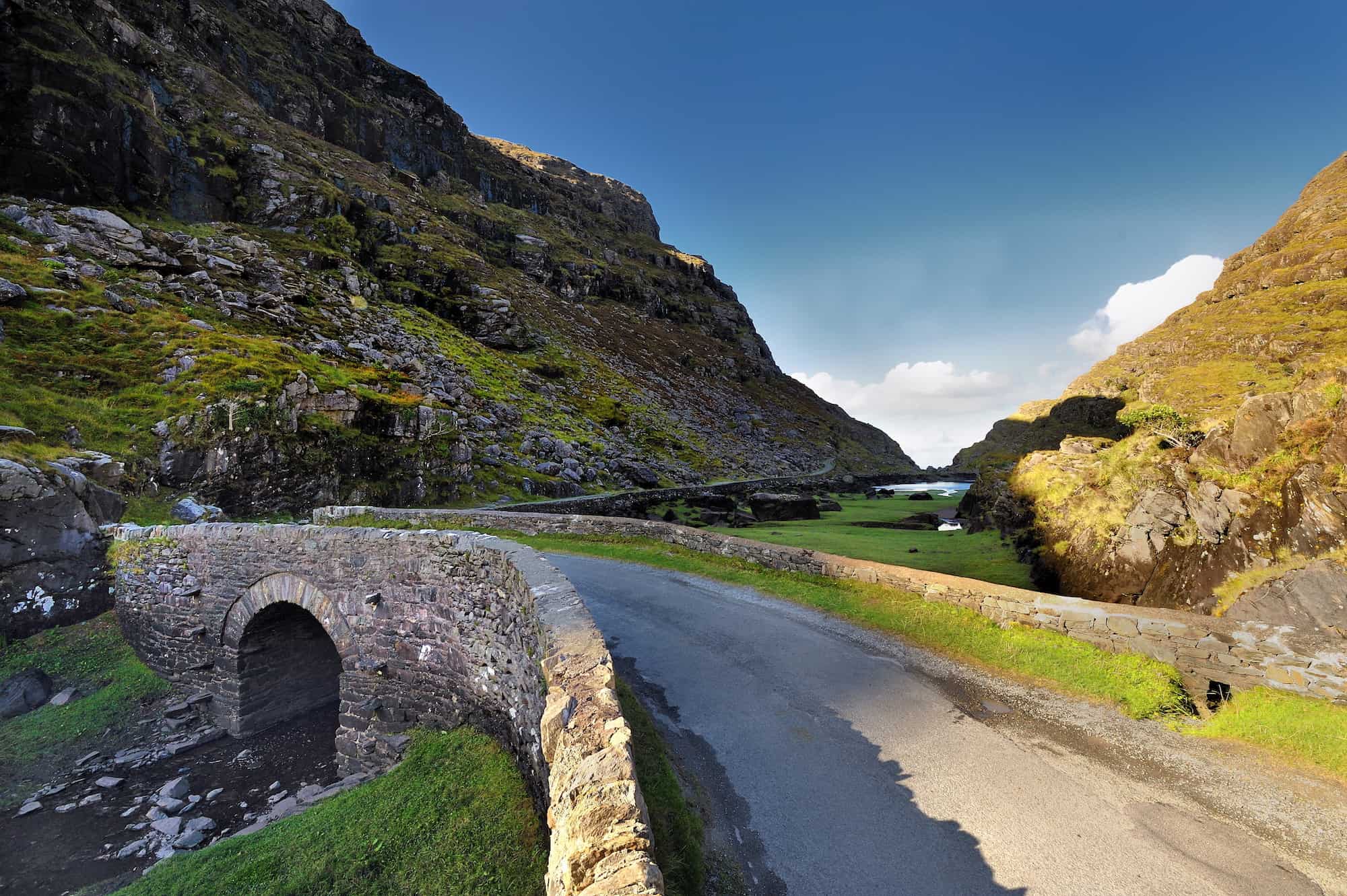
If you’re still wondering when the best time to visit Ireland for good weather is – it’s summer. You stand a good chance of getting the best weather in Ireland between July and early September. Temperatures range from 15°C-21°C. Locals enjoy the sunny weather and festivals in the countryside and the city. It’s the perfect time to enjoy a pint of Guinness outside and watch life go by!
When is the Best Time of the Year to Travel to Ireland for Golfing?
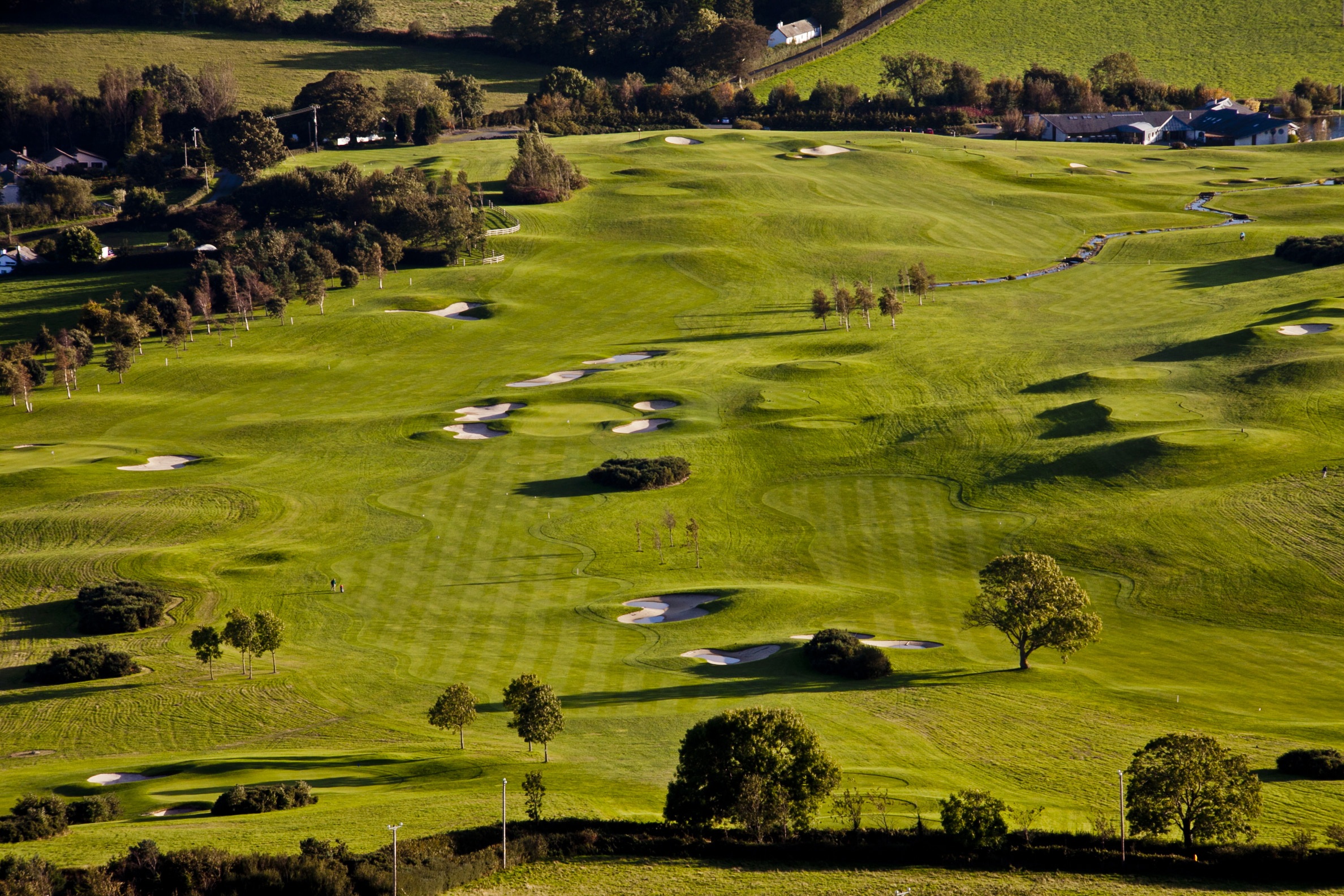
Ireland is a popular country to travel to for avid golfers. The best time of year to go to Ireland for golf is between April and September would be a good time for golf as you’ll want to try and get the best weather in Ireland.
However, you’ll likely still see rain and wind in April and May, but almost no crowds. June may be the best time for golfing due to the weather. If you’re out on the course early in June, you’ll likely beat all the crowds too.
When is the Best Time to Travel to Ireland for Festivals?
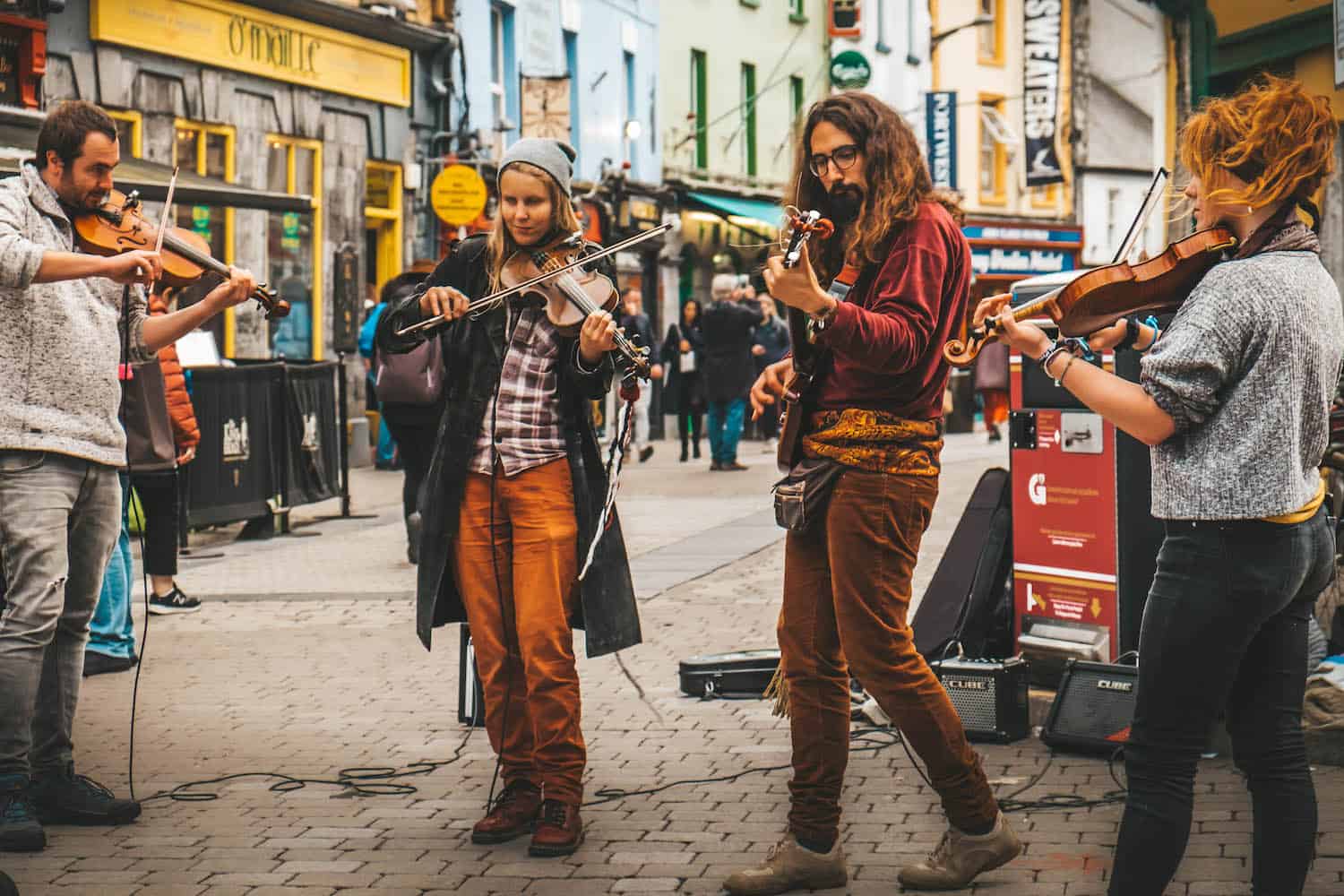
Ireland has festivals year-round! It just depends on which one suits your fancy. Our favorite was the Galway Oyster Festival in Late September, but there are also amazing Halloween Festivals in Ireland. Of course, no one can forget about St. Patricks Day in mid-March.
There’s always something going on during the summertime in Ireland. From large cities to the small countryside towns you’ll be able to find a summer festival.
When is the Best Time to Travel to Ireland to See the Castles?

The Castles of Ireland are open year-round but will be crowded during the summer months. If you want nice weather for walking around the castle grounds, visit during the shoulder season when you’ll find fewer crowds. If your goal is to stay in an Irish castle, you will find the cheapest rates during the off-season (November-April).
Quick Ireland Travel Tips
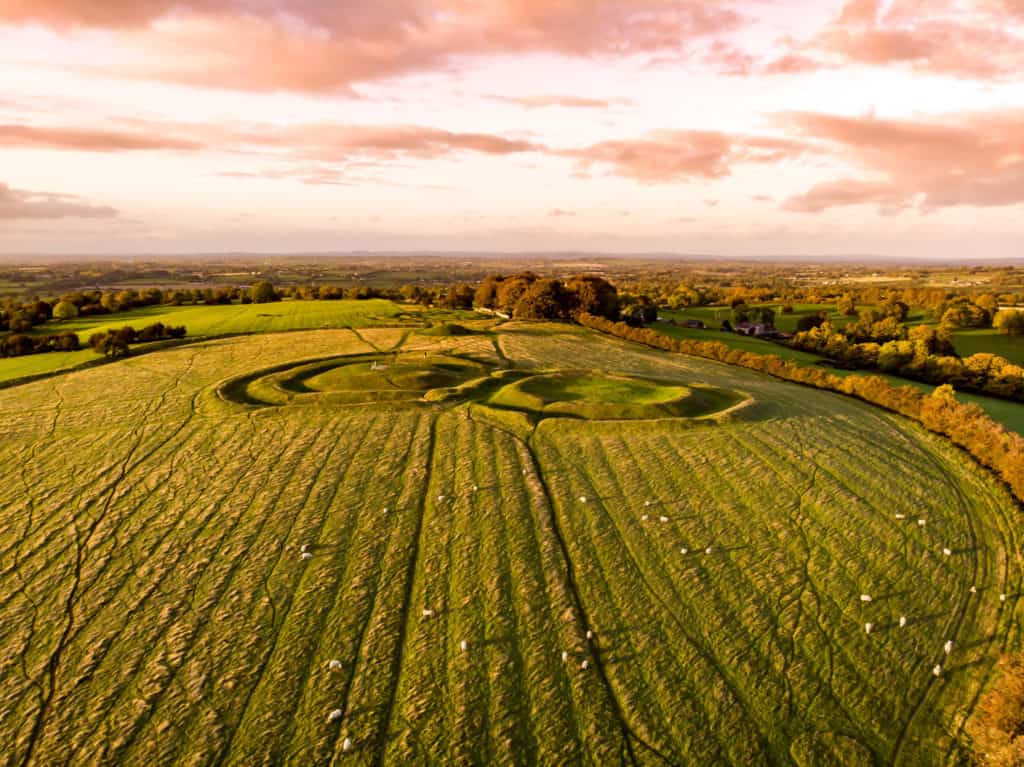
- ‘Hello’ and ‘Thank You’ in Gaelic: “Dia dhuit” and “Go raibh maith agat”
- Currency: Euro – (EUR) – €
- Visa: The Republic of Ireland & Northern Ireland are separate countries on the island of Ireland. The Republic of Ireland, known as ‘Ireland’, grants 90-day visas. Northern Ireland, a part of the United Kingdom, also grants 90 days.
What to Pack for Ireland?

Are you wondering what to wear in Ireland? The Emerald Isle has drawn many tourists from all over the world to its shores for decades. Perhaps it’s ancestral pasts for so many Americans that draw people to Ireland. Or it could merely be the friendly locals who create such a welcoming atmosphere in a stunning country rich in heritage.
Ireland Planning Resources
- Packing Guide — Check out our Ireland Packing List to help pack your bags and ensure you don’t leave anything at home.
- Rent a Car — We suggest most visitors consider renting a car for the best trip possible. Try Discover Car Hire to compare quotes from different rental agencies.
- Protect Your Trip — We don’t travel without travel insurance and neither should you. You never know what can happen while traveling so it’s best to be prepared. HeyMondo provides excellent short-term and long-term travel insurance plans.
- Travel Adapter – Make sure you find a good adapter to keep your personal electronics charged. Otherwise, you may be paying for a cheap one once you land. Purchase one here.
- Rain Jacket — Ireland does not get so green without its share of rain. No matter the time of year, we recommend a packable rain jacket.

